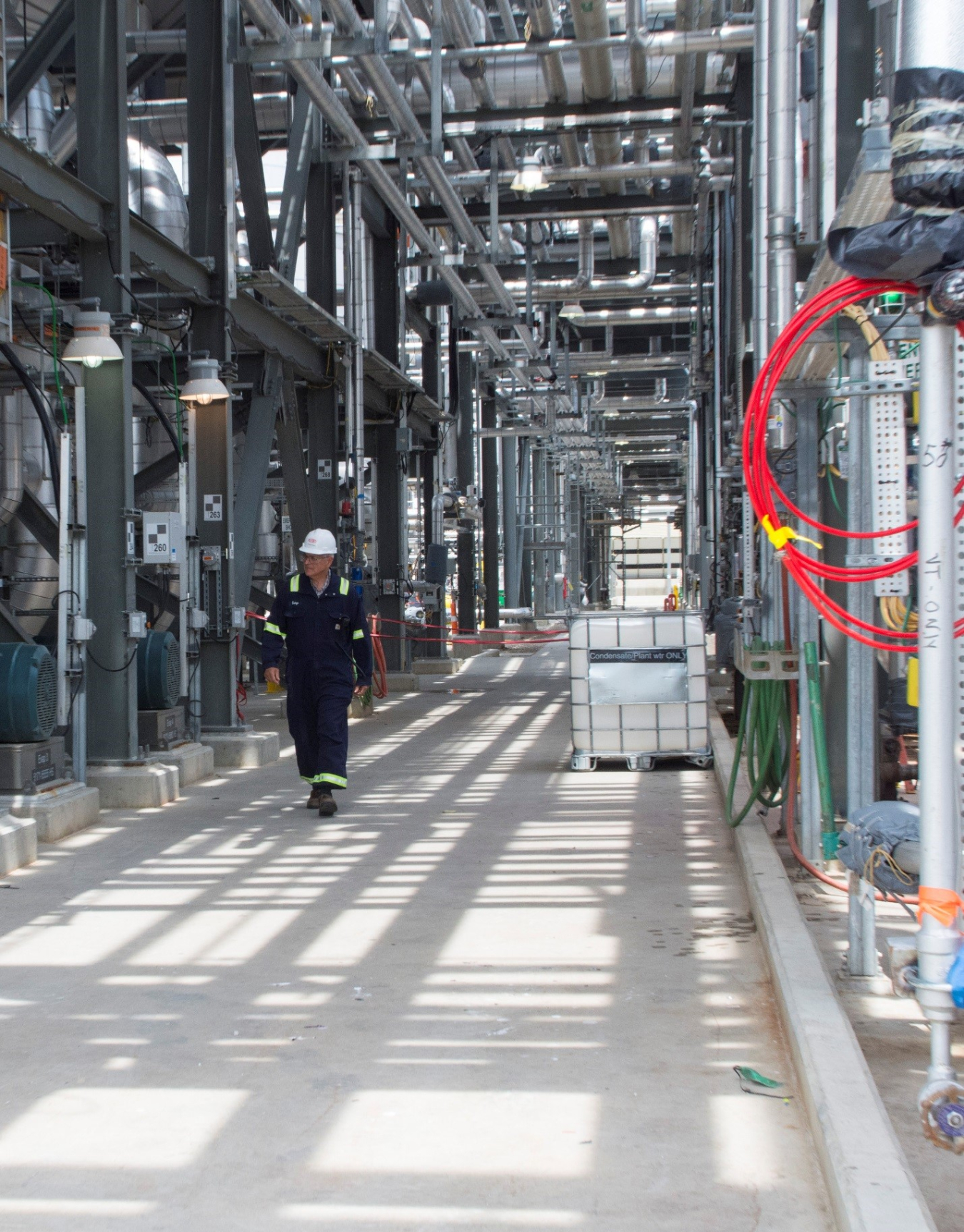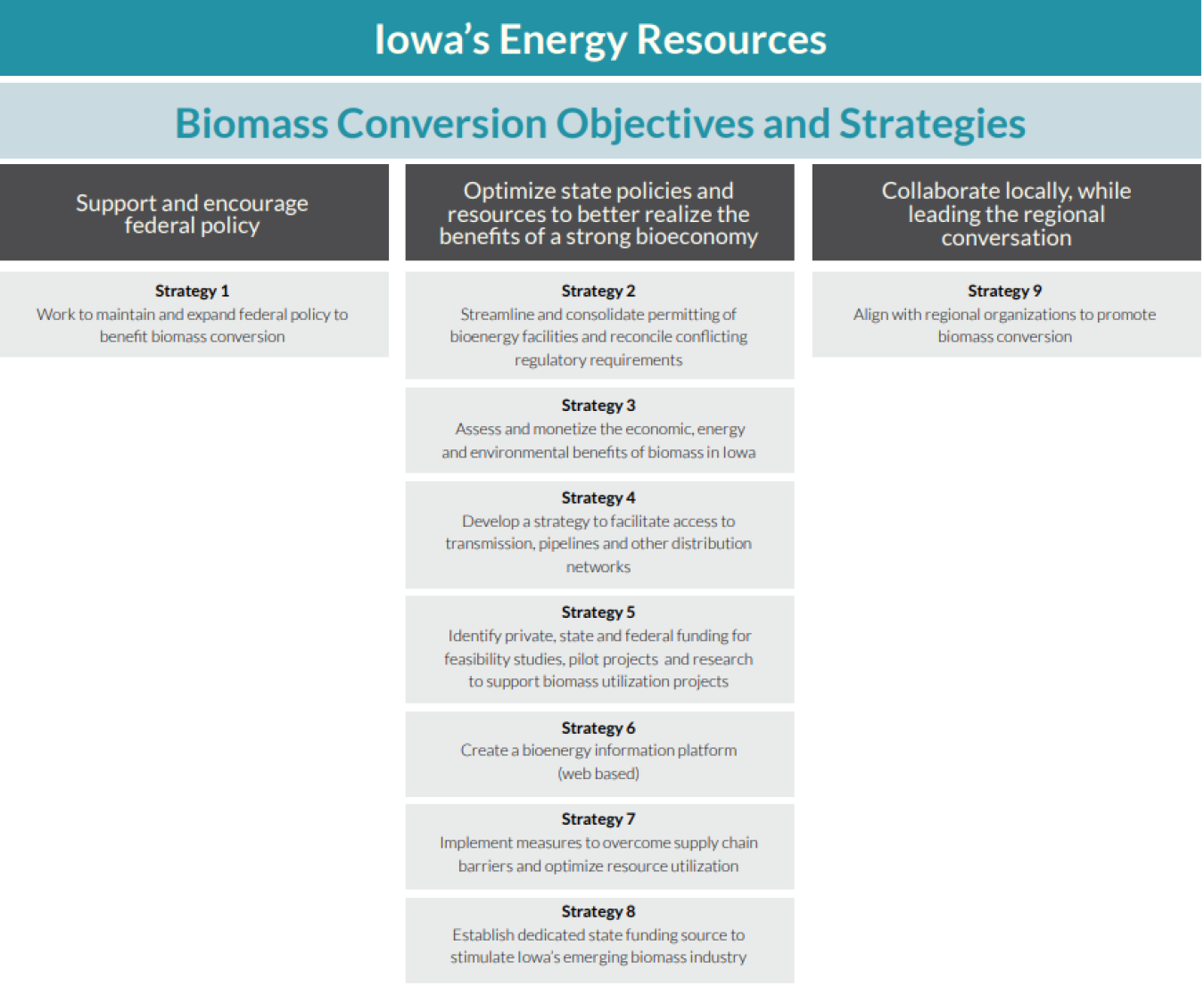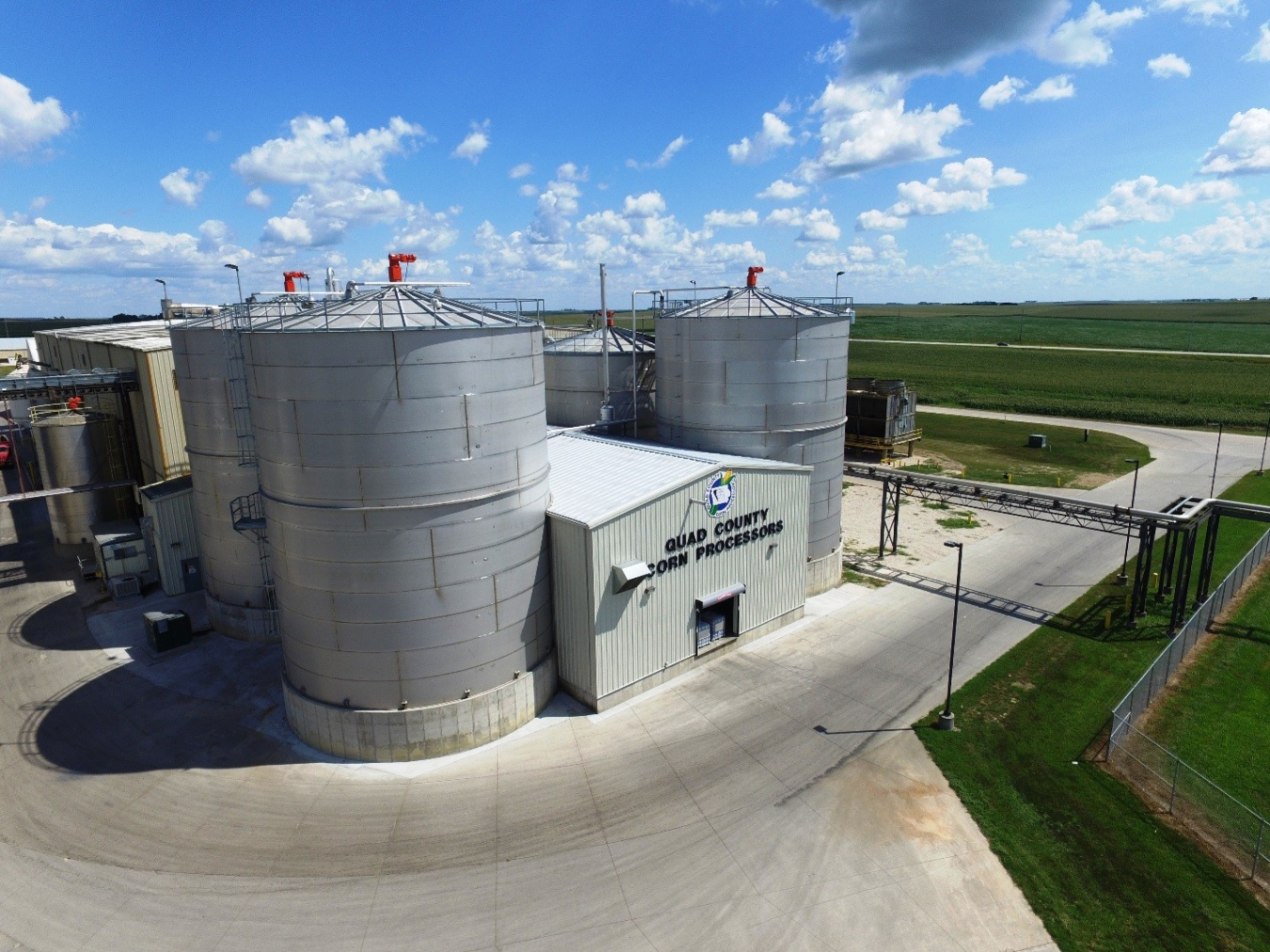Implementing a state energy plan can help ensure that a state is doing everything economically feasible to manage energy consumption and reduce energy
March 21, 2019
Implementing a state energy plan can help ensure that a state is doing everything economically feasible to manage energy consumption and reduce energy- and water-related costs. The State of Iowa's energy plan, developed in 2016, focuses on the large potential for biomass. The animal agriculture industry alone has the potential to use methane recovery to produce 1.8 million megawatt hours of energy per year, and harnessing its potential would have positive impacts for Iowa s energy production and economy. Realizing Iowa's biomass potential can also have positive employment benefits for the state. Ethanol production alone in Iowa currently supports over 15,000 jobs (Source: Iowa Renewable Fuels Association, 2018).
In January 2017, with financial assistance from the U.S. Department of Energy's (DOE) State Energy Program, the Iowa Economic Development Authority formed the Biomass Conversion Action Committee. The role of the committee was to identify markets, business cases, and barriers for biomass-to-energy expansion. As a result of these efforts, the Biomass Conversion Action Plan was created. Input from the committee, stakeholders, and Iowa's energy plan helped to identify nine strategies in three categories to expand the development and use of biomass in Iowa (see figure below).

According to Debi Durham, Director of the Iowa Economic Development Authority, “As a productive agricultural state, Iowa has great potential to benefit economically and environmentally by further realizing the value-added attributes of biomass in the development of bioenergy, biofuels and biochemicals. The Biomass Conversion Action Plan is a blueprint with strategies to realize that potential.”
The strategies integrate Iowa's agricultural, energy, and environmental goals into a business model that is specific to the biomass industry. Bioeconomic opportunities in Iowa include livestock waste-to-biogas projects, development of modular biopower systems for distributed generation, and value-added chemicals from biofeedstocks. Using the Biomass Conversion Action Plan could not only increase the development and use of this renewable energy source, but it could also increase the number of jobs in the state.

The Energy Department's State Energy Program provides funding and technical assistance to states, territories, and the District of Columbia to enhance energy security, advance state-led energy initiatives, and maximize the benefits of decreasing energy waste. The State Energy Program emphasizes the state's role as the decision-maker and administrator for program activities tailored to their unique resources, delivery capacity, and energy goals.

